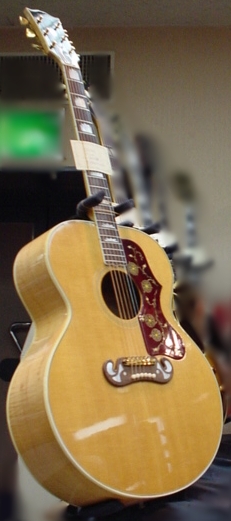In my efforts to provide a complete picture of my recording setup, I didn't include two of the most important items in the studio: my studio monitors and headphones. Without these, mixing and mastering would be an impossible process. The M-Audio AV40 speakers and Grado SR60 headphones have been perfect for providing clear, uncolored playback of the tracks.


On this track, I once again relied on my Variax 500 guitar and Variax 700 bass. Models of the leftmost guitars - a Gibson J200 and Gibson Nighthawk - were used for the rhythm work, and the Gibson ES-335 was used for the lead parts. For the bass, I used the same Gibson Thunderbird model as last time.



I didn't use my amp or effects on this track. I initially sent the guitar through the Pod XT Live, but I noticed as I was mixing it that there seemed to be some noise and clarity issues with the track. It's possible I just didn't have the levels right at the time. In the end, all the guitar work was directly recorded to the audio interface. For the electric parts, I used an amp simulator plug-in - CAPS AmpVTS - which I seem to recall was set to a '59 Bassman. I didn't have quite the same vibe as using my own amp, but it did allow me to do get some late-night recording done.
Another change with this track was that I ended up using some recorded drum loops rather than Hydrogen. I picked some up last month from Beta Monkey, who were having a special on their already very reasonably-priced drum libraries. I didn't get too adventurous with them this time; maybe on the next track.
Images:
All guitars images provided by Wikimedia Commons
Speakers/headphones: Marshall Brown, Creative Commons BY-NC-ND 3.0









